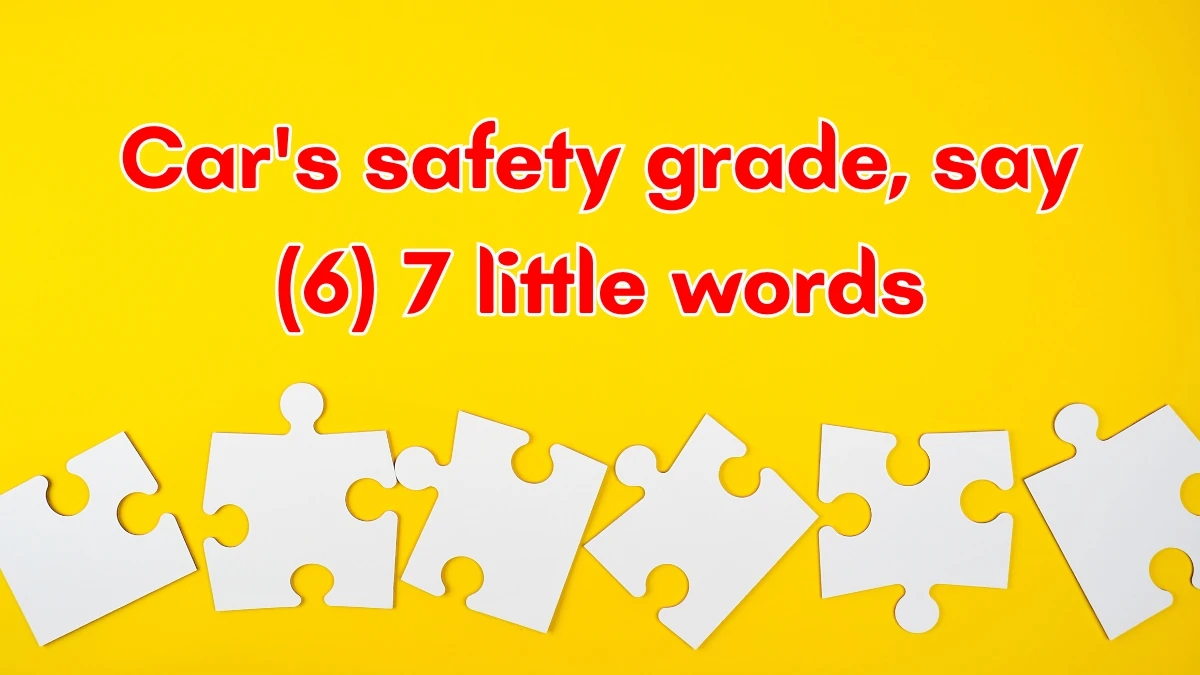Car's safety grade, say (6) - Crossword Clue
Answer: RATING
Understanding Car Safety Ratings and Grades
- Car safety ratings are standardized evaluations that measure how well vehicles protect occupants during crashes.
- Organizations like the National Highway Traffic Safety Administration (NHSA) and the Insurance Institute for Highway Safety (IIHS) conduct rigorous crash tests and assign grades—typically ranging from one to five stars or from Poor to Good—to help consumers make informed purchasing decisions about vehicle safety.
- The crossword answer RATING (6 letters) refers to these numerical or letter-based safety grades that appear on window stickers and in automotive reviews.
- These ratings evaluate frontal crashes, side impacts, rollover resistance, and increasingly, advanced safety features like automatic emergency braking and lane departure warnings.
Why Safety Ratings Matter
- Crashworthiness: How well the vehicle protects occupants during accidents
- Crash avoidance: Technology that helps prevent accidents from occurring
- Pedestrian safety: Protection for those outside the vehicle
- Child safety: LATCH system ease and effectiveness
Tips for Understanding Car Safety Ratings
- Compare multiple rating systems - Don't rely on just one organization's assessment. NHTSA uses a five-star system while IIHS uses ratings like Top Safety Pick and Top Safety Pick+.
- Check the test date - Safety standards evolve constantly. A five-star rating from 2015 doesn't equal a five-star rating from 2025 due to more stringent testing protocols.
- Look beyond the overall score - A vehicle might earn five stars overall but have weaknesses in specific areas like side-impact protection or rollover resistance that matter for your driving conditions.
- Consider real-world safety features - Ratings measure crash performance, but features like blind-spot monitoring, adaptive cruise control, and automatic emergency braking prevent crashes altogether.
- Factor in vehicle size - Ratings compare vehicles within their class. A highly-rated small car won't necessarily protect you as well as a highly-rated SUV due to physics and mass differences.
Car's safety grade, say (6) - 7 Little Words - FAQs
Q: What's the difference between NHTSA and IIHS ratings?
NHTSA is a government agency that uses a five-star system and focuses on crash tests, while IIHS is an independent nonprofit funded by insurance companies that uses ratings from Poor to Good and emphasizes both crashworthiness and crash prevention technology.
Q: Do safety ratings affect insurance costs?
Yes, vehicles with higher safety ratings typically qualify for lower insurance premiums because they reduce injury risk and claim severity. Some insurers offer specific discounts for cars with advanced safety features or top ratings.
Q: How often are safety ratings updated?
Ratings are assigned when new vehicle models or significantly redesigned versions undergo testing. A car that hasn't changed substantially may keep the same rating for several years, though testing standards themselves are updated periodically.
Q: Can older cars have good safety ratings?
Older vehicles can have good ratings by the standards of their era, but safety technology advances rapidly. A 2015 model with top ratings may lack features like automatic emergency braking that are now standard on many 2025 vehicles with similar ratings.
Q: Are expensive cars always safer?
Not necessarily. While luxury vehicles often include more advanced safety features, many affordable mainstream vehicles now achieve top safety ratings. Testing is objective and based on performance rather than price point.






